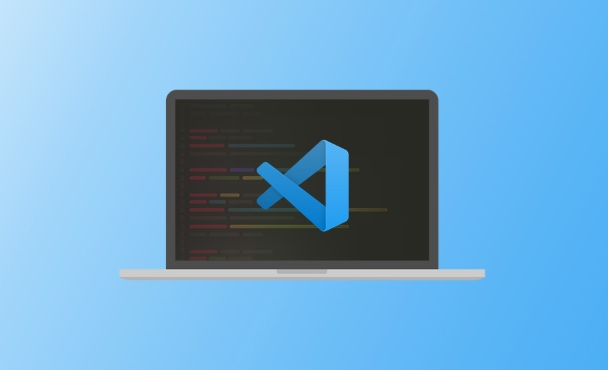 Development Tools
Development Tools
 VSCode
VSCode
 How to automatically switch VSCode theme between light and dark mode on Linux
How to automatically switch VSCode theme between light and dark mode on Linux
How to automatically switch VSCode theme between light and dark mode on Linux
Jul 04, 2025 am 12:36 AMUse GNOME's built-in dark mode setting to automatically switch VSCode theme by enabling Dark Mode in Settings > Appearance, ensuring VSCode uses "Default Light" or "Default Dark". 2. Create a script using gsettings and gnome-settings-daemon to detect GTK theme changes and switch VSCode themes accordingly, making the script executable and running it at startup or with real-time monitoring. 3. Install the "Auto Theme Switcher" extension in VSCode for automated theme switching based on system settings or custom time rules, configurable through VSCode settings without scripting. You can automate VSCode theme switching between light and dark mode on Linux via GNOME settings, custom scripts, or extensions like Auto Theme Switcher, each offering varying levels of control and ease of use.

Switching your VSCode theme automatically between light and dark mode on Linux can make your workflow more comfortable, especially if you switch environments or use night light settings. You don’t have to manually change the theme every time — with a few tweaks and tools, it’s totally doable.

1. Use GNOME's built-in dark mode setting (if you're on GNOME)
If you're using GNOME as your desktop environment, it supports automatic switching of application appearance based on system preferences.

- Go to Settings > Appearance.
- There should be an option for "Dark Mode" or similar.
- Enable the automatic schedule (if available) or toggle it manually.
VSCode respects the system preference by default, so once this is set up, your editor should follow suit.
Note: This works best when your VSCode theme is set to "Default Light" or "Default Dark", which adapt to the system setting.

2. Sync VSCode theme with system-wide dark mode using gnome-settings-daemon
For more control, you can write a small script that detects the current GTK theme and switches VSCode accordingly.
Here’s how:
-
Install
gsettingsif not already installed:sudo apt install dconf-cli
Create a script like this:
#!/bin/bash THEME=$(gsettings get org.gnome.desktop.interface gtk-theme | tr -d "'") if [[ "$THEME" == *"dark"* ]]; then code --set-color-theme "Default Dark " else code --set-color-theme "Default Light " fi
Make it executable:
chmod x your-script.sh
Run this script at startup or hook it into a monitor like inotify or dbus-monitor to detect theme changes in real time.
3. Use extensions like "Auto Theme Switcher"
There are several extensions in the VSCode Marketplace that help automate this process.
One popular choice is Auto Theme Switcher, which lets you define different themes for day and night and can sync with system settings or custom time-based rules.
How to use:
- Install the extension from the Extensions tab.
- Open settings (
Ctrl ,) and search for “auto theme”. - Set your preferred light and dark themes.
- Choose whether to sync with system appearance or use a time schedule.
This method is easier and doesn’t require scripting knowledge, though some features may depend on your desktop environment or OS support.
That’s basically it. Depending on your setup and comfort level with scripting, you can go from simple system-level syncing to full automation with dynamic detection. Either way, keeping your eyes comfortable shouldn’t be a hassle.
The above is the detailed content of How to automatically switch VSCode theme between light and dark mode on Linux. For more information, please follow other related articles on the PHP Chinese website!

Hot AI Tools

Undress AI Tool
Undress images for free

Undresser.AI Undress
AI-powered app for creating realistic nude photos

AI Clothes Remover
Online AI tool for removing clothes from photos.

Clothoff.io
AI clothes remover

Video Face Swap
Swap faces in any video effortlessly with our completely free AI face swap tool!

Hot Article

Hot Tools

Notepad++7.3.1
Easy-to-use and free code editor

SublimeText3 Chinese version
Chinese version, very easy to use

Zend Studio 13.0.1
Powerful PHP integrated development environment

Dreamweaver CS6
Visual web development tools

SublimeText3 Mac version
God-level code editing software (SublimeText3)

Hot Topics
 How to change the default terminal in vscode settings?
Jul 05, 2025 am 12:35 AM
How to change the default terminal in vscode settings?
Jul 05, 2025 am 12:35 AM
There are three ways to change the default terminal in VSCode: setting through a graphical interface, editing settings.json file, and temporary switching. First, open the settings interface and search for "terminalintegratedshell" and select the terminal path of the corresponding system; secondly, advanced users can edit settings.json to add "terminal.integrated.shell.windows" or "terminal.integrated.shell.osx" fields and escape the path correctly; finally, you can enter "Terminal:SelectD through the command panel
 How do I resolve 'command not found' errors in the VS Code terminal?
Jul 04, 2025 am 12:50 AM
How do I resolve 'command not found' errors in the VS Code terminal?
Jul 04, 2025 am 12:50 AM
1. Confirm whether the command is installed 2. Check the terminal shell type 3. Update the PATH environment variable 4. Restart VSCode or terminal. When you enter a command in the VSCode terminal, you should first check whether the command has been installed correctly and can be verified through other terminals of the system; secondly, confirm the shell type used by VSCode and check its configuration file; then make sure that the path where the command is located has been added to the PATH environment variable, and manually add and reload the configuration if necessary; finally close and reopen the terminal or restart VSCode to make the changes take effect.
 How do I use VS Code's settings sync feature?
Jul 03, 2025 am 12:43 AM
How do I use VS Code's settings sync feature?
Jul 03, 2025 am 12:43 AM
TosyncVSCodesettingsacrossdevices,signinwithaGitHuborMicrosoftaccount,customizewhatgetssynced,andmanuallytriggersyncwhenneeded.First,openVSCodeandsigninviatheprofileiconorCommandPaletteusing"Sync:TurnonSync".Next,choosewhattosyncsuchassetti
 Fixing 'Timed out waiting for the debugger to attach' in VSCode
Jul 08, 2025 am 01:26 AM
Fixing 'Timed out waiting for the debugger to attach' in VSCode
Jul 08, 2025 am 01:26 AM
When the "Timedoutwaitingforthedebuggertoattach" issue occurs, it is usually because the connection is not established correctly in the debugging process. 1. Check whether the launch.json configuration is correct, ensure that the request type is launch or attach and there is no spelling error; 2. Confirm whether the debugger is waiting for the debugger to connect, and add debugpy.wait_for_attach() and other mechanisms; 3. Check whether the port is occupied or firewall restricted, and replace the port or close the occupied process if necessary; 4. Confirm that the port mapping and access permissions are configured correctly in a remote or container environment; 5. Update VSCode, plug-in and debug library versions to solve potential
 What are VS Code workspaces, and how are they used?
Jul 10, 2025 pm 12:33 PM
What are VS Code workspaces, and how are they used?
Jul 10, 2025 pm 12:33 PM
VSCode workspace is a .code-workspace file that saves project-specific configurations. 1. It supports multi-root directory, debug configuration, shortcut key settings and extension recommendations, and is suitable for managing different needs of multiple projects. 2. The main scenarios include multi-project collaboration, customized development environment and team sharing configuration. 3. The creation method is to save the configuration through the menu File>SaveWorkspaceAs.... 4. Notes include distinguishing between .code-workspace and .vscode/settings.json, using relative paths, and avoiding storing sensitive information.
 How to set environment variables for the terminal in VS Code settings on Linux?
Jul 06, 2025 am 12:23 AM
How to set environment variables for the terminal in VS Code settings on Linux?
Jul 06, 2025 am 12:23 AM
There are two ways to set environment variables for VSCode terminals on Linux: one is to use the terminal.integrated.env.linux configuration item to define variables that are only used by VSCode; the other is to modify the shell configuration file to take effect globally. 1. In VSCode, add variables such as "MY_VAR":"my_value" by setting the terminal.integrated.env.linux field. This method only affects the VSCode terminal; 2. Modify shell configuration files such as ~/.bashrc or ~/.zshrc and add exportMY
 How to set environment variables for debugging in vscode settings?
Jul 10, 2025 pm 01:14 PM
How to set environment variables for debugging in vscode settings?
Jul 10, 2025 pm 01:14 PM
To set debug environment variables in VSCode, you need to use the "environment" array configuration in the launch.json file. The specific steps are as follows: 1. Add "environment" array to the debugging configuration of launch.json, and define variables in key-value pairs, such as API_ENDPOINT and DEBUG_MODE; 2. You can load variables through .env files to improve management efficiency, and use envFile to specify file paths in launch.json; 3. If you need to overwrite the system or terminal variables, you can directly redefine them in launch.json; 4. Note that
 Where is the vscode settings.json file located?
Jul 14, 2025 am 01:21 AM
Where is the vscode settings.json file located?
Jul 14, 2025 am 01:21 AM
To access the settings.json file of VSCode, you can directly open it through the command panel (Ctrl Shift P or Cmd Shift P). The default storage location of the file varies according to the operating system. Windows is in %APPDATA%\Code\User\settings.json, macOS is in $HOME/Library/ApplicationSupport/Code/User/settings.json, Linux is in $HOME/.config/Code/User/






